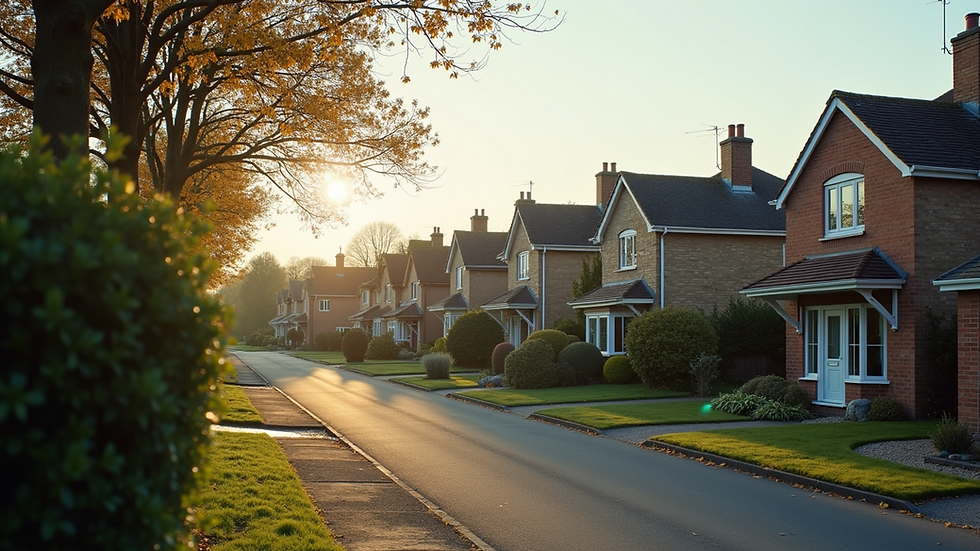Assessing Subsidence Risks in Mansfield Homes Linked to Coal Mining Activities
- Zak Williamson
- Aug 14
- 4 min read
Mansfield, a town rich in industrial heritage, faces unique challenges relating to its past, particularly concerning coal mining activities. As homes are built above former mining sites, the risk of subsidence—a gradual sinking or settling of the ground—has become a growing concern for homeowners and local authorities alike. Understanding the implications of coal mining on property stability is crucial for safeguarding both investments and communities. This blog will explore the risks associated with subsidence in Mansfield's homes, the importance of conducting a subsidence survey, and what homeowners can do to protect themselves.
Understanding Subsidence
Subsidence occurs when the ground beneath a structure sinks or settles. This phenomenon can be triggered by various factors, but in Mansfield, the historical context of coal mining is a significant contributor. When mines are abandoned, the voids left behind can lead to ground instability which often manifests as cracks in walls, uneven floors, and other structural issues.
Homeowners may notice signs of subsidence in multiple ways, including cracks in the walls, doors that no longer close properly, or the appearance of uneven floors. These issues can escalate if not addressed early, leading to significant repair costs and a decrease in property value.
The geological makeup of Mansfield; with its rich seams of coal, presents a double-edged sword. While it supported the community's growth and prosperity, the resultant mining activities have left a legacy of potential risks.
The Coal Mining Legacy in Mansfield
Coal mining was a cornerstone of Mansfield's economy for many decades. However, as the industry declined, the repercussions became apparent, with many residents unaware of the potential dangers linked to subsidence.
The mining process often involved removing vast quantities of earth to access coal seams. Once the coal was extracted, the ground above it was often left unsupported, creating voids that could cause the surface to collapse or settle over time. This situation is especially prevalent in areas where mining took place beneath residential neighborhoods.
Given the historical significance of the coal industry in the region, many homes are now in close proximity to these former mining sites, leading to a heightened risk of subsidence. It's essential for homeowners to educate themselves about the potential sources of subsidence related to coal mining and how they can mitigate its effects.
Conducting a Subsidence Survey in Mansfield
For any homeowner in Mansfield, understanding the potential risks is paramount. The best way to begin is by conducting a comprehensive subsidence survey. These surveys assess the stability of the ground beneath a property and can identify indications of past or present subsidence.
What to Expect from a Subsidence Survey
A typical subsidence survey involves a combination of visual inspections and advanced monitoring techniques. Surveyors will look for explicit signs of damage, such as cracks and bulges. They may also employ tools such as ground-penetrating radar and laser scanning to detect voids or subsidence patterns below the surface.
Depending on the findings, the surveyors can provide tailored recommendations on the best course of action to stabilize the property. This could involve underpinning foundations, filling in voids, or implementing drainage solutions to manage water flow—one of the key elements that can exacerbate subsidence.
Choosing the Right Surveyors
It's crucial to select professionals who specialize in subsidence surveys. Look for qualified individuals or firms with expertise in mining-related subsidence, as they will have a deeper understanding of the specific challenges in Mansfield. Ensure they have the right certifications and experience in dealing with similar issues, as this knowledge can be invaluable.
Dealing with Subsidence Issues
For those already experiencing the effects of subsidence in their homes, taking action must be immediate. Homeowners should:
Document Evidence: Take photos and keep a record of any signs of deterioration. This documentation may be essential for insurance claims or further investigations.
Consult Professionals: Seek a subsidence survey to assess the situation accurately. Professional advice can help determine the extent of the problem and the necessary remediation measures.
Speak with Neighbors: Collaboration can be vital. If multiple homes in an area are affected, residents can collectively approach local authorities or surveyors for assistance.
Contact Insurers: Check with your insurance provider about coverage for subsidence-related damage. Knowing your policy's terms can help you prepare financially for any potential repairs.
Stay Informed about Local Developments: Local authorities often provide updates on mining activities and related surveys that can affect property safety. Being proactive in following local news can help homeowners make informed decisions.
Conclusion
Subsidence linked to coal mining remains a pressing concern for many homeowners in Mansfield. Understanding the risks, recognizing the signs of subsidence, and taking proactive measures such as conducting a subsidence survey are essential steps in protecting one’s home and investment.
By remaining vigilant and engaging with professionals in the field, residents can ensure that they are well informed and equipped to tackle subsidence issues effectively. As the mining legacy continues to influence our landscape, being proactive today can help safeguard the foundations of tomorrow.



.png)
.png)



Comments